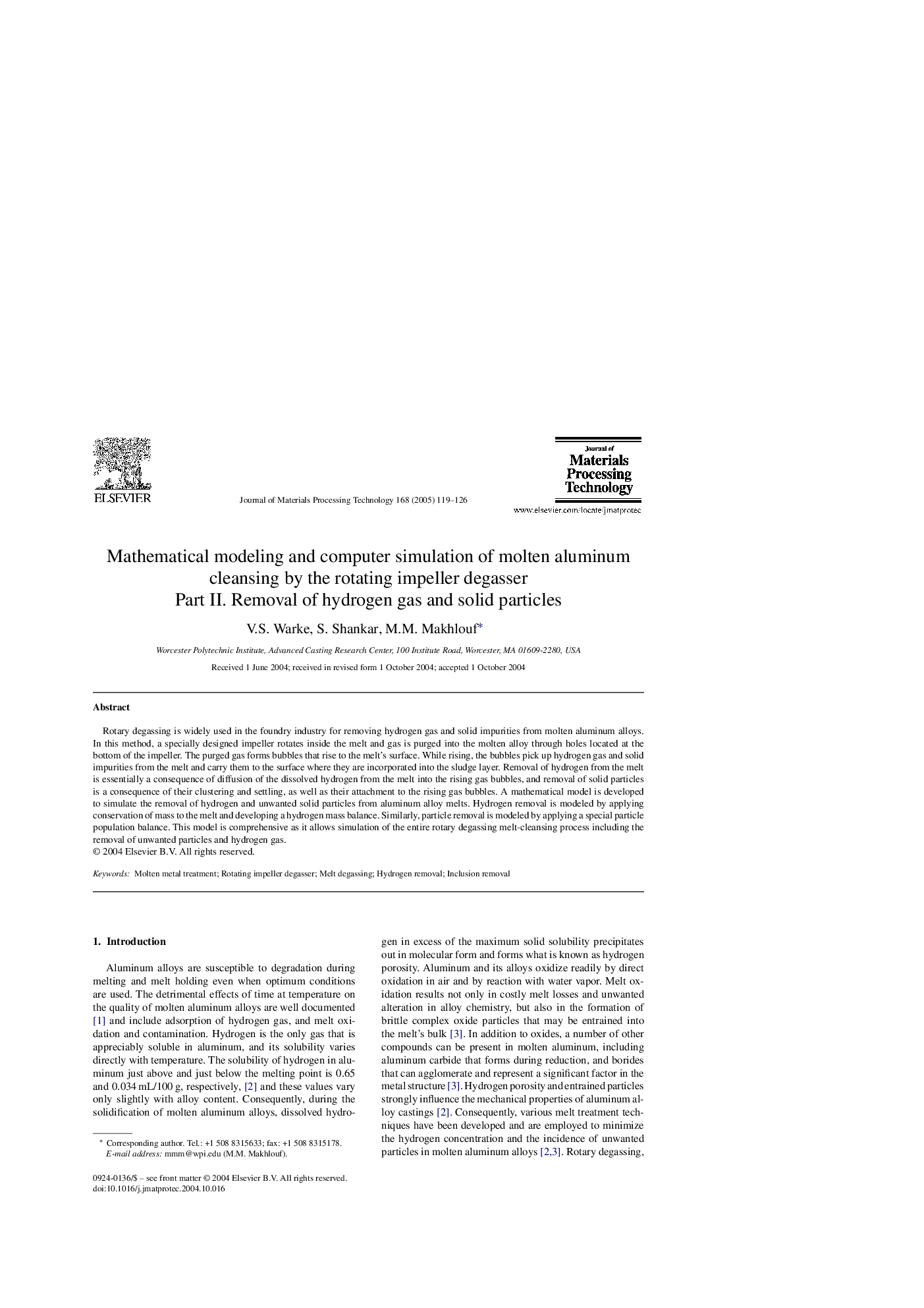| Article ID | Journal | Published Year | Pages | File Type |
|---|---|---|---|---|
| 10418083 | Journal of Materials Processing Technology | 2005 | 8 Pages |
Abstract
Rotary degassing is widely used in the foundry industry for removing hydrogen gas and solid impurities from molten aluminum alloys. In this method, a specially designed impeller rotates inside the melt and gas is purged into the molten alloy through holes located at the bottom of the impeller. The purged gas forms bubbles that rise to the melt's surface. While rising, the bubbles pick up hydrogen gas and solid impurities from the melt and carry them to the surface where they are incorporated into the sludge layer. Removal of hydrogen from the melt is essentially a consequence of diffusion of the dissolved hydrogen from the melt into the rising gas bubbles, and removal of solid particles is a consequence of their clustering and settling, as well as their attachment to the rising gas bubbles. A mathematical model is developed to simulate the removal of hydrogen and unwanted solid particles from aluminum alloy melts. Hydrogen removal is modeled by applying conservation of mass to the melt and developing a hydrogen mass balance. Similarly, particle removal is modeled by applying a special particle population balance. This model is comprehensive as it allows simulation of the entire rotary degassing melt-cleansing process including the removal of unwanted particles and hydrogen gas.
Keywords
Related Topics
Physical Sciences and Engineering
Engineering
Industrial and Manufacturing Engineering
Authors
V.S. Warke, S. Shankar, M.M. Makhlouf,
